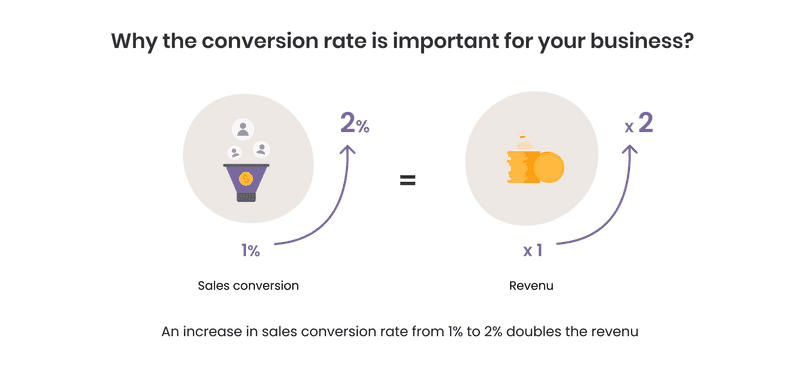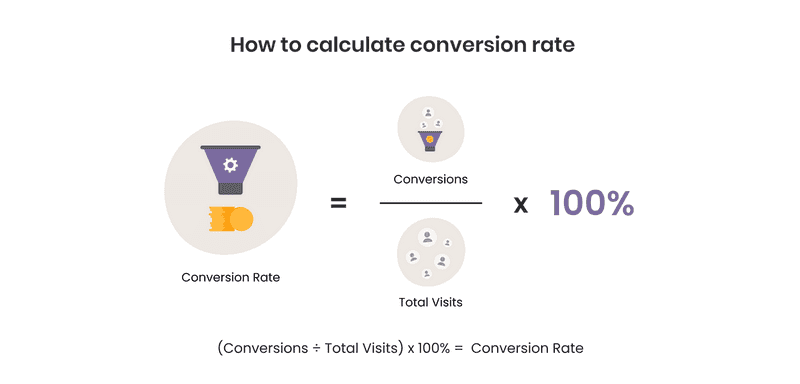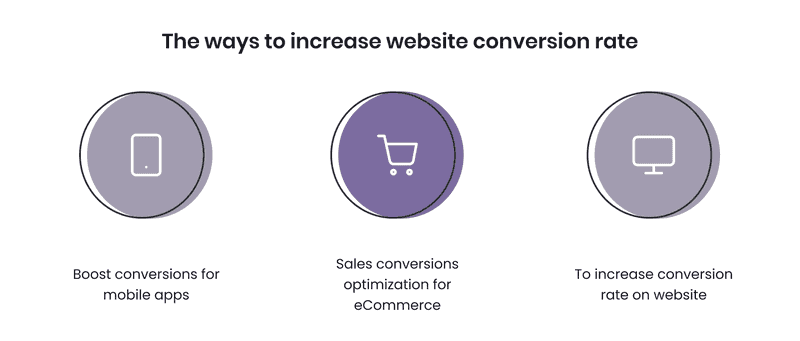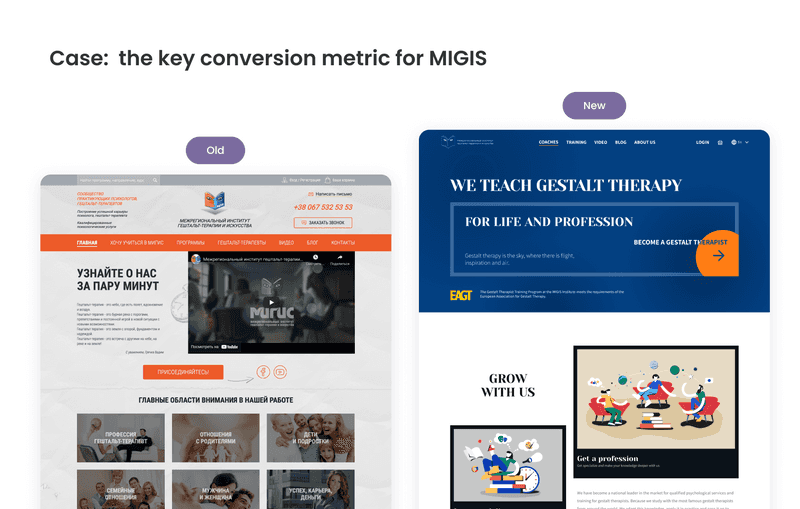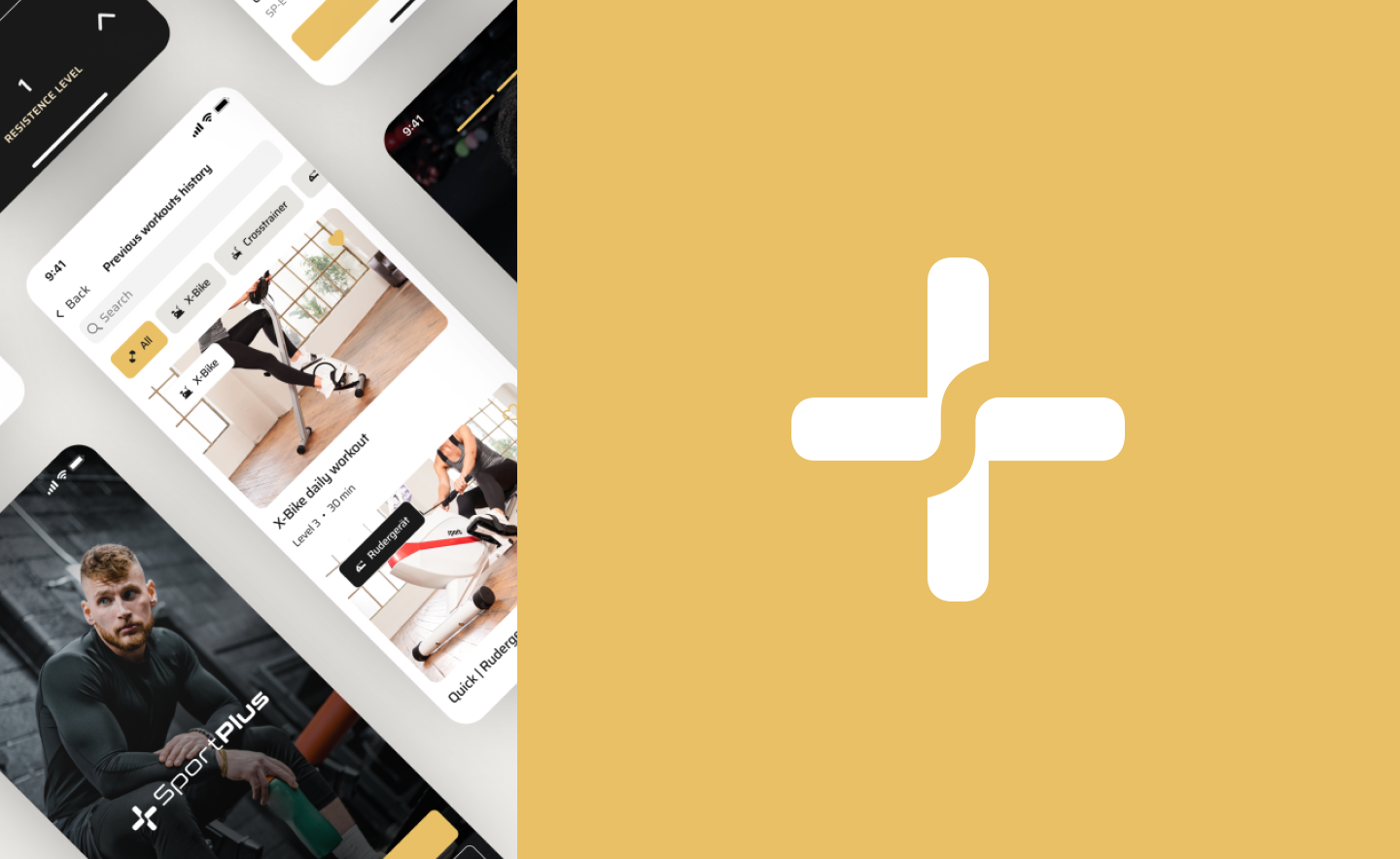Driving traffic to your website or app is not enough to ensure the sustainable growth of your business. Moreover, when the said traffic does not complete the required action, it’s still not enough to bring the expected results.
The matter is that every business or a company has its goals, and in many cases, one can translate these goals into Call-To-Actions on the website or app: Buy our product, Order our service, etc.
Therefore, the success of a business depends on the users who perform the required Call-To-Actions — and that’s what we call conversion (for instance, mobile, desktop, or app conversion).
Just imagine: an increase in sales conversion rate from 1% to 2% doubles the revenue. Therefore, the app conversion rate becomes the number one metric for any application. The same goes for the website. And obviously, it’s crucial to know the current conversion rate and understand how the improvements in conversion rate can affect the whole business results.
This article outlines the basics of the website and mobile app conversion rate metrics and discovers CRO options. We will answer the most intriguing question: how to improve the conversion rate? There are various approaches to CRO, but we will provide you with the most effective yet simple tools. Spoiler: you can improve your conversion rate even with slight changes to the design. And perhaps, that’s what you need for your site or app.
What are website and app conversion rate metrics?
How to increase conversions if you don’t even know what metrics to pay attention to? Of course, it’s impossible. Therefore, let’s first define app and web site convention metrics.
The first question to be answered is what are website conversions. Duran Inci, Co-Founder and COO of Optimum7, describes conversion as such: ‘you want to make sure that visitors complete a certain desired action. The rate at which customers complete these actions is called a conversion rate.’ All in all, this definition explains the whole process behind the conversion. However, what are these ‘certain desired actions,’ and how do they differ according to the type of business?
We have defined the most typical goals for different types of businesses. They will help you understand how to improve conversion rate, as you will know what points you should pay more attention to at this stage.
Basic e-commerce conversion rate metrics
- Purchases (how many users completed a purchase)
- Creating an account (how many users decided to create an account)
- Adding to carts (how many users added goods to the cart)
- Signing up for a newsletter (how many users are willing to get emails from you)
- Average bill (an average sum of money spent by customers in one purchase)
- Returns (how many customers return to the website or app)
Basic app conversion rate metrics
- Signing up for a service (how many users decided to sign up for your services)
- App installs (how many users installed the app)
- App relaunching (how many times users come back to the app and launch it again)
- Frequency of launches (how often users launch the app)
- Average session length (how long one session lasts)
Basic web products conversion rate metrics
- Submitting a form (how many users submitted a form on your website)
- Signing up for a service (how many users decided to sign up for your services)
- Signing up for a newsletter (how many users are willing to get emails from you)
- Buying a subscription (how many users decided to buy a subscription)
Obviously, different businesses have their own goals and track different conversion metrics. Here, we exemplify what kind of metrics can be used for measuring conversion.
How to measure website and app conversion rate?
You can calculate your current conversion rate independently. First, you need to define your goal (what kind of actions users need to perform); it will indicate your conversion. Of course, you need some time to get these numbers. It is an obligatory step if you want to increase conversion for your app or website.
Google states that ‘Conversion rates are calculated by simply taking the number of conversions and dividing that by the number of total ad interactions.’ We can use this approach to measure any conversion rate. So here’s the formula:
(Conversions ÷ Total Visits) x 100% = Conversion Rate
The average e-commerce conversion rate is 2.35%. Only 10% of companies have 3-5x higher conversion rates. If your conversion rate is 1-3% - it’s a great result, but it doesn’t mean you should not fight for even better rates. Conversion optimization tips will help you to define what exactly you need to do to get better results.
In 2021, tablets have the highest conversion rates, while mobile and desktop are around 2%.
Conversion rate of online shoppers in the United States as of 2nd quarter 2020, by device (Statista)
8 ways to increase website conversion rate
So how to increase conversion rate? Even the slightest changes introduced to the website or app can greatly affect the conversion rate. Here are the most typical ways to increase website conversion.
How to boost conversions for mobile apps
- Make app easy to find in the search.
Andi Clifford from Skein says that ‘for the desired action to take place, an app must appear when searched.’ Ensure that your app is easy to find: the keywords and title are appropriate, the screenshots are appealing, the description contains all information important for the users. - Use push notification.
Correct implementation of push and in-app notification can dramatically affect customer conversion rate. Make sure you use notification in the right place and time. - Loading speed is important.
If the loading speed of your website is low, do not expect a high conversion rate. In the modern world, the speed of the app is as important as the quality.
Sales conversions optimization for eCommerce
- Add videos.
Videos are an effective tool when it comes to user engagement and sales conversion. Moreover, if you offer a complex product, you can use video for a detailed explanation. - Make a clear CTA.
When you do not provide users with a clear CTA, the users do not understand what exactly they need to do, and as a result, user conversion is getting low. - Reveal product details.
A solid description of a product can simplify the user journey and make users do the expected actions faster, providing the best conversion rates.
How to increase conversion rate on website?
- Conduct A/B testing.
A/B testing helps to define the weak spots of your app or site conversions so you could fix them and finally get the results you expect. This is the first thing you need to do when it comes to CRO. - Opt for good UX/UI.
When a website or app looks and feels good, site conversion impresses with its growth. Let’s dwell on the design CRO improvements you can implement now.
How to improve conversion rate with design
So how can design help with conversion rate optimization? Here are 5 effective tools you can use now:
- Focus users on important elements.
For instance, visually support all sensitive forms. In this way, you will draw the attention of your users to the necessary points. If you are wondering how to increase conversion rate ecommerce store, here’s the answer: support sensitive forms on the payment stage. - Simplify processes or Don’t make me think.
Example: simplified forms. In most cases, you do not need the whole bulk of information you ask from your users. Select several points that are most important for you, and this will improve web site conversion rates. - The choice should be done easily.
Reduce the number of options when it comes to the choice. Always draw attention to the option that is better. - Follow best practices.
For example, when creating a registration form, provide a user with all the necessary tips to create a password. If the password requires some special symbols, note this in a tip. Also, make sure that in case of a mistake, users will easily understand how to fix it. Highlight the mistakes and give tips on how to correct them. - Establish a visual hierarchy.
A conversion site has a visual hierarchy that helps in the improvement of the overall user experience and attracting attention to the required actions.
Although the design is an effective tool when it comes to CRO, there are some things that you need to avoid.
- It’s better to avoid dark patterns if you want to improve ecommerce conversion rate as they may cause some frustration during the customer journey.
- Never give untruthful information to the user if you want to grow the sales conversion rate. For sure, it will bring some results: customers may perform the required action, but only once. They will hardly return to you later.
- Before you start to optimize conversion rate, clearly define in what metrics you expect some changes. Perhaps, some of the metrics are not obligatory for you.
Case study: Chow we used design in CRO for MIGIS
Whenever we start working on conversion rate optimization, we always start with the analysis. The same happened with MIGIS, an educational platform for qualified gestalt therapy.
To increase sales (the key conversion metric for MIGIS), we conducted user interviews and applied a framework for Brand Wheel.
We’ve analyzed the following attributes:
- the product itself
- competitive advantages
- company values
- target audience
- the essence of the brand
Moreover, we conducted a workshop with the users to find out why they came to the client. Then we added how we (as a customer) want to see the brand. On top of that, we defined the key moments according to the Brand Wheel, combined with our user story. Eventually, we came up with a new landing page structure.
Does good design help to increase the conversion rate?
You should always remember that there are different ways to improve the conversion rate. Still, the overall results of these improvements should also reflect on your biggest goal, for example, revenue. What is a good conversion rate? It mainly depends on your business, but 2-4% is great for any company.
Depending on your goals, you should select the approaches to conversion rate optimization. Remember that before you start to change something on your website, you need to know what result these changes will cause. Moreover, all changes regarding website conversion rate should never be implemented at once, as this may have unpredictable effects on the whole business model.
Therefore, the process of optimization should always start with the research and the analysis. If you are not sure that you can do this on your own, feel free to ask Axicube for help.
At Axicube, we conduct detailed research before we start optimization of conversion rate. We develop a plan and strategy to make sure that every change we are planning to implement will turn into a conversion rate increase. Additionally, we help with the production stage - we create designs that work perfectly for a better conversion rate.
